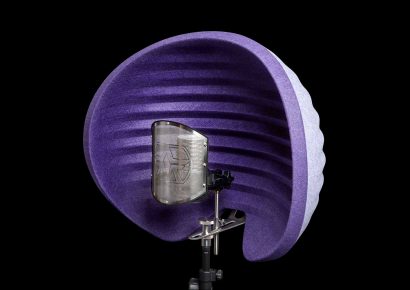From Suzi Quatro to Pino Palladino, we check out the best Fender Precision Bass players
Arguably the most iconic bass on all time – the Fender Precision bass has been the standard of bass guitar for the best part of 70 years. As Fender Precision Bass players have reaped the rewards.
Since its commercial introduction in 1951, its “slab” non-contoured ash body with two “horns” provided players with a distinctly balanced feel, paired with simple electronics and controls and a single pickup. As the decades have rolled on, the Precision has become notable as one of, if not the most recorded bass guitar of all time, defining the sound of numerous eras of music, particularly that of soul, R&B, through to rock and heavy metal.
Read all the latest features, columns and more here.
While being available in numerous different styles and flavours these days, the Precision still stays true to its roots, with its no-nonsense aesthetic, simple operation, and distinctive tone that just sits in a mix, without needing a lot of work done to it – they just work!
Over the years, there have been notable bass players that have either predominantly or exclusively worked a Fender Precision, having them as a number one choice for working in the studio or out on the road.
We break down the best of the best in this Best Fender Precision Bass Players list.
Sting
Easily one of the most lustrous music careers on the planet – Sting has enjoyed enormous success both with the band The Police, as well as an ever expansive solo career with classic hits such as ‘Roxanne’, ‘Every Breath You Take’ through to ‘Fields Of Gold’, and ‘Englishman in New York’.
Right from the early day of The Police, Sting has always had an affiliation with beautiful old Fender basses. His most coveted are a few mid-late 1950s Fender Precisions.
The most used and prized of these basses would be his ’57 Precision, a very well-worn bass indeed! A backup bass he also uses for touring is a ’54 Precision.
These models have a distinctive look, especially by comparison to later models, with the slimmer, flatter, more Telecaster-like headstock, more simple two-tone sunburst finishes and a vintage single coil pickup. The signature Sting bass made by Fender was based on his 1953 Precision bass. Impeccable taste and tone.
Suzi Quatro
If ever there was a musician that could not only absolutely shred on the bass, but also blast out an insane vocal performance whil writing a killer hit song, it’s Suzi Quatro.
Hailing from Detroit, Michigan, Suzi’s lustrous carrier of hits include the likes of ‘Can the Can’, ‘Devil Gate Drive’, and ‘If You Can’t Give Me Love’, to name but a few. Suzi’s output of music since her self-titled debut solo release in 1973 has been nothing short of prolific, having released 15 studio albums, numerous compilations, as well as a live album.
Since being gifted a 1957 Precision Bass at the age of 14 by her father Art, Suzi has continually sported a P-Bass throughout her career, particularly when in the studio, stating in an interview with Music Radar – “I use the Precision in the studio because the Precision is the only bass that exists – and I mean the only bass that exists – that you can plug directly into the board and it’s perfect”.
During the early months of the pandemic in 2020, Suzi created the video series Suzi Quatro Bass Line featuring a casual 50 videos in which Suzi breaks down some of her favourite bass lines, all played on her coveted Fender Precision Bass. Definitely worth a watch.
James Jamerson
Without doubt one of the most inspirational and widely uncredited bass players in music history, James Jamerson was responsible for bringing us the distinctive feel and groove of countless Motown Record classic hits of the 1960s and early 1970s having played on 23 Billboard Hot 100 number one songs as a session musician, as well as 56 R&B number one hits. Tracks include ‘My Girl’ by The Temptations, ‘For Once in my Life’ by Stevie Wonder, and most of Marvin Gaye’s album What’s Going On.
Famously known for “knowing when not to play”, Jamerson’s style and ethos as a musician has been one that’s inspired countless generations of players. Sporting a Precision Bass on pretty much every session he played on, its fair to say Jamerson made the P-bass known as the session bass player’s bass. Revolutionising the previously rather simplified bass playing styles of the time, Jamerson’s transition from upright bass to electric bass brought with it a more melodic and improvised feel, while still retaining a locked-in groove with the drums.
The first Fender bass Jamerson had was a refinished black ’57 Precision. This was sadly stolen and replaced by an early ’60s sunburst model, which was then also stolen. Probably his most iconic bass was a stock 1962 model, affectionately dubbed “The Funk Machine” – a three-tone sunburst with a tortoiseshell pick guard, rosewood fingerboard, and a chrome pickup and bridge covers. A piece of foam was apparently used in the bridge cover to help dampen the string and reduce overtones – a trick now used by countless other bass players. Jamerson used heavy gauge flat-wound strings and were famously “never replaced”.
Roger Waters
A founding member of one of the worlds most iconic psychedelic bands – Roger Waters has been hand-in-hand with a Fender Precision bass while playing with Pink Floyd.
Having created iconic bass lines for songs such as ‘Money’, as well as countless other classics such as ‘Shine On You Crazy Diamond’, ‘Wish You Were Here’, and ‘Another Brick in The Wall (Part II)’, Waters certainly is one of the most pioneering song writers and bass players – being particularly prolific during the golden era of British music in the 1970s and into the 1980s. His distinctive feel, sense of melody, and interplay with Nick Mason’s intricate and delicate drumming made for one of the most idiosyncratic rhythm sections in contemporary music.
Waters’ classic black Fender Precision bass (sporting an accompanying black scratch plate and distinctive maple fret board) has been the cornerstone of his playing, defining his tone and as well as aesthetic. Fender released a Custom Shop version of Rogers distinctive bass, with an all black finish and maple fret board. A true rock and roll icon.
Pino Palladino
One of the most prolific session bass players of all time and arguably greatest of these Fender Precision Bass players – Pino Palladino has shared the stage and studio with some of the world’s finest bands, artists and musicians including the likes of The Who, Jeff Beck, John Mayer Trio, Nine Inch Nails, Gary Numan and D-Angelo – these being just the tip of the proverbial iceberg.
Palladino’s career has spanned several decades finding early success in the early 1980s playing on Gary Numan’s iconic album I, Assassin as well as numerous other albums and world tours with other artists.
From the early 1990s Pino has typically sported a Fender Precision bass, using a 1963 sunburst Precision Bass on D’Angelo’s album Voodoo. Palladino and Fender Custom Shop collaborated in creating a signature Precision, based on two of Pino’s Precision basses. The light alder body is a faded red fiesta paint over desert sand paint is based on his 1961 Precision, while the C-shaped maple neck and rosewood fretboard are based on his 1963 sunburst model. You can still find these special signature models on the second hand market, although they attract a pretty penny – as one would expect.
Nate Mendel
Dating back to his formative years as a bass player and well before joining the Foo Fighters, Nate Mendel has been a P-bass fanatic, citing it as the standard in bass sound and design. His first Fender Precision bass was a 1971 model, sold to him by the lead singer of a punk-rock band Nate used to play – Christ on a Crutch. This bass went on to feature on every major record Nate has played on. Iconic!
Supposedly this particular model of 1971 Precision Bass was only made for half a year, featuring a rather unique neck – supposedly a blend of a Precision and Jazz bass neck. Fender Custom Shop and Nate closely collaborated to make some replicas of this rather special bass, which has afforded Nate to take these on tour and keeping his prized Precision at home for studio use.
Nate’s unique playing style can be found on iconic Foo Fighters albums such as The Colour and the Shape, There is Nothing Left to Loose, One by One, Wasting Light and many more.
Eva Gardner
Having played with some of the most iconic artists and bands of the last few decades, Eva Gardner has certainly left a distinctive tonal footprint on modern contemporary music – having shared the stage with artists such as P!nk, Gwen Stefani, The Mars Volta, Moby, as well as enjoying her own solo career. Eva has taken much influence from her father Kim Gardner, a renowned session bassist who was part of the British Invasion of the US in the 1960s.
Since the early days of performing with The Mars Volta, Gardner has rocked her infamous black Fender Precision Bass, with a red tortoiseshell scratch plate. While an initial signature prototype was made by Fender Custom Shop for Gardner, Fender went on to mass produce a Squier Eva Gardner Signature Precision Bass.
This signature model is inspired by the numerous Precision Basses Eva has played over her expansive career and also features some special graphics based on a couple of Eva’s tattoos – it looks awesome! As of 2022, Gardner has returned as the bass player of The Mars Volta.
Steve Harris
Fuelling one of the most turbocharged heavy metal acts hailing from the UK, Iron Maiden’s Steve Harris just wouldn’t sound the same without his beastly Fender Precision.
Having created some of the most thunderous bass lines on the planet, Harris has influenced countless players since hitting the scene as the primary songwriter of Iron Maiden in the mid-1970s. Since then, Harris’ distinctive bass riffs can be heard on tracks such as ‘Run to the Hills’, ‘Number of the Beast’, and ‘The Trooper’.
Having always played the one Fender Precision bass which features on every Iron Maiden album, this one and only P-Bass has gone through numerous changes and colour iterations – from its original white, to a black finish, to blue sparkle and back to white with claret and blue pin striping with a West Ham United F.C crest.
Fender created two signature models for Harris based on the latter aforementioned two finishes. Other unique features include a mirrored scratch plate, a Seymour Duncan Steve Harris SPB-4 signature model pickup, flat-top knurled chrome control knobs and a Fender High-Mass bridge. Tasty stuff indeed.
It’s hard to imagine music without the iconic sound of the Fender Precision Bass, so cheers to Leo Fender for creating yet another classic!
How do you rate these Fender Precision Bass players? More on the Steve Harris Precision Bass here.







